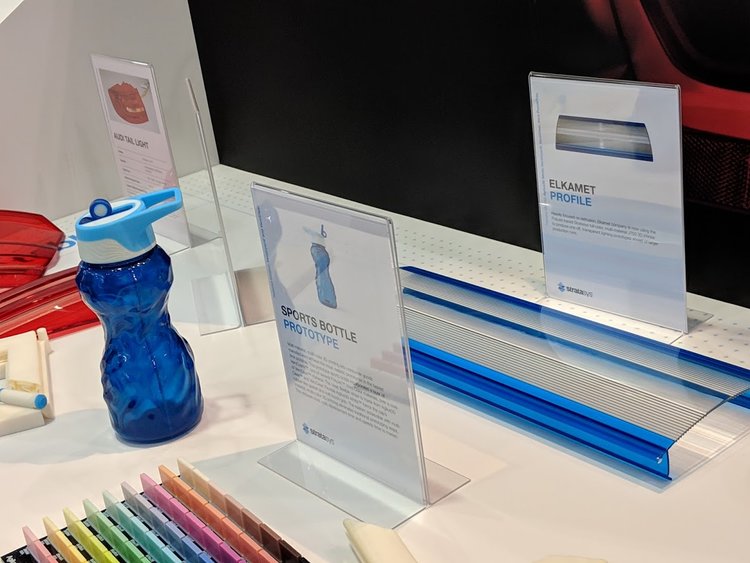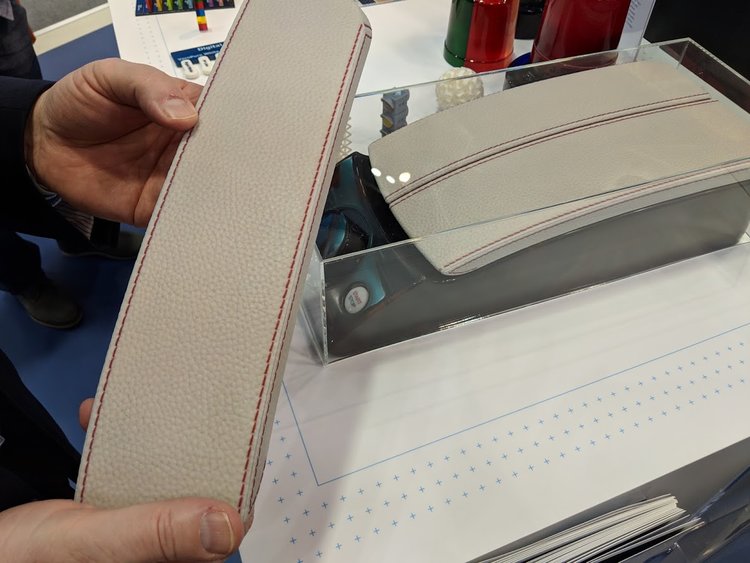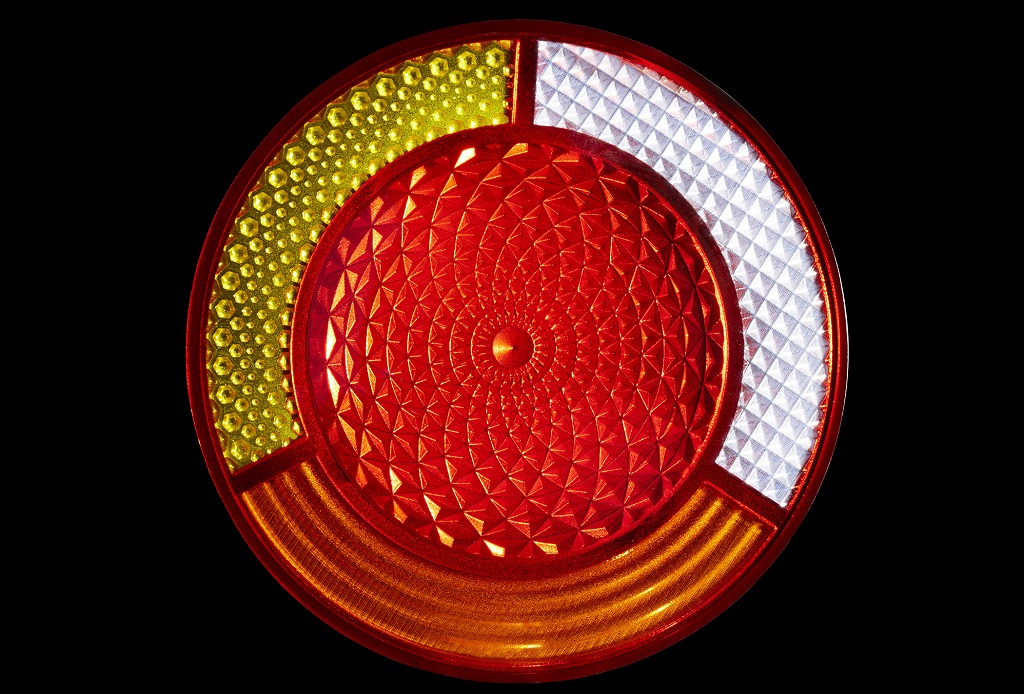![The J750 has shown success for prototyping taillight covers [Image: Stratasys]](https://fabbaloo.com/wp-content/uploads/2020/05/Challenge1_img_5eb09f17e7e4a.jpg)
The Make it Real challenge from GrabCAD is open: knick-knacks need not apply.
Challenges from GrabCAD are a popular way for the design community to come together and put their skills to the test. In this latest, the project call is focused on reality and how 3D printing can bring a concept into physical reality.
The challenge is open now — and Stratasys have asked me to join their judging panel. For more background on why this challenge might interest the community and what the other expert judges and I will be looking for, I chatted with the team behind it.
Gina Scala, Director of Global Education at Stratasys, and Ryan Schultz, VP of Vertical Marketing at Stratasys, shared a closer look at how multi-material, multi-color 3D printing is ready for a challenge.
“Stratasys GrabCAD and Stratasys Direct Manufacturing are launching the Make it Real challenge. All applications value realism,” Scala explained. “Realism is not just color, and not just looks; it’s feel, it’s matching to the world all around us… We’re asking designers to define realism and what it means through a printable part: what they want to do with the part, what its purpose is in the world, and to plan whatever that might be.”
The reality of the 3D print will be helped along by leveraging the capabilities of Stratasys’ powerful J750. The multi-material machine can create parts that are truly impressive. At the recent formnext, Stratasys introduced more materials for the system that offer more complex capabilities in terms of color and look, texture and feel, and ability to work together in the same build. If it sounds like the only limit is the imagination — well, that’s just what the team are looking now to overcome.
This all, the team at Stratasys notes, plays into the larger push the company is doing into realism.
“We’re excited at Stratasys because we think we’re the company that provides the most realistic prototypes in the 3D printing space,” Schultz said. “Look where we’ve made investments in recent years: it’s around making the most realistic prototypes possible. We’ve made introductions in materials, expanding the color spectrum, enhancing transparent materials, with agile and rigid materials, and bringing these all together in a single print. Stratasys technology is at the point where we can make prototypes indistinguishable from the final part.”
The claim sounds inflated, as many in 3D printing do, but there’s a difference — he’s got a point. A water bottle at their formnext booth was often mistaken for one some negligent visitor had left behind, but was actually a prototype highlighting the capabilities of multi-material 3D printing. It was next to an armrest prototype for a vehicle that looked and felt like leather (well, maybe faux leather, but still not one would expect to have come off a print bed). Below are a few photos I took during the show, when I was hands-on with these samples:



“This is important in the design community because designers spend a lot of time in the iterative design process. When you switch to the Stratasys 3D printing design flow, you shorten the design cycle and really have the tools at your fingertips to bring the design to visual life,” Schultz continued.
While much of the push we’ve heard from Stratasys in recent months has been centered around production and metal, the company hasn’t forgotten the importance of prototyping.
“What you’ll see in 2019 is more emphasis on the design community. The design competition is the first opening salvo in how we want to bring this positioning to life in the market. We’re excited to work with the GrabCAD community to unleash the design potential of that community. What’s cool is we now have the tools to make hyper realistic tools and designs and we’re only limited by the creativity of designers. We think this is a great opportunity for designers to step forward and push the boundaries of what’s possible with these tools,” Schultz said.
The GrabCAD community seems poised to respond to the challenge. It’s a vibrant, busy community with more than three million designs out there already. There are no restrictions on eligibility for the contest, Scala noted; signing up for a profile takes all of half a minute to contribute a design. Or two. Multiple submissions are welcome, as are group entries.
Each entry will be judged based on four criteria, described as:
-
Aesthetics – Part looks and feels like the real thing it is trying to imitate or create.
-
Innovation – Part pushes boundaries and challenges conventions of 3D printing.
-
Solves a Problem – Part realism serves a purpose – not a cute knick-knack.
-
Use of Technology Tools – Part takes advantage of your choice of 3D modeling software and the unique capabilities of the J750 by Stratasys – i.e. multi-materials, full color.
![Medical models can show finesse and detail [Image: Stratasys]](https://fabbaloo.com/wp-content/uploads/2020/05/challenge3_img_5eb09f195a17b.jpg)
Creating a pretty decoration is lovely, but that’s not what this particular contest is for. Think medical models, functional part prototypes, design concepts for new products. And think big: the J750 allows for a great deal of functionality, with GrabCAD Print features enabling complex internal structures for voxel-level detailing and material control. More than 500,000 colors are possible for high-resolution prints. Layers can be down to 14 microns (Scala pointed out that a standard piece of printer paper is 100 microns thick, for comparison).
“We’re really looking for people to lean into that tool for designs that utilize the full box of tools for their realistic part,” Scala noted. “A core component that our judges will be looking for is that it solves a problem, that a design isn’t a knick-knack, it’s not something you could buy at a dollar store, but it solves a real problem. We want to see how they work with these capabilities and utilize them to impact medical treatment, or the emotional experience a car design gives to the driver.”
![[Image: Stratasys]](https://fabbaloo.com/wp-content/uploads/2020/05/challenge2_img_5eb09f19b6d30.jpg)
The challenge opened for entry this week, and closes on January 28th. From there, the panel of judges will examine each submission based on the above four criteria. (I’m excited about this part!) Three finalists will be announced on February 1st, and their designs each 3D printed. These three designs will be on display at the upcoming SOLIDWORKS World in Dallas, Texas — and the winner will be selected there. Live votes will determine the final outcome.
“To add to the excitement of realism, we’re going to have real people in the industry, real 3D printing users and designers, vote on the three finalists and elect the final winner,” Scala said.
Prizes for the contest offer the next opportunity for the winning designers to continue their exploration of advanced manufacturing, with print credit from Stratasys Direct Manufacturing. Third place will take home their printed model and a $1,000 print credit; second place will receive their 3D printed model and a $5,000 print credit; and the first place winner will be awarded a $10,000 print credit, their printed model, and the induction of their part into the Stratasys Customer Experience Center.
The contest is live now: Make it Real












1 comment
Comments are closed.